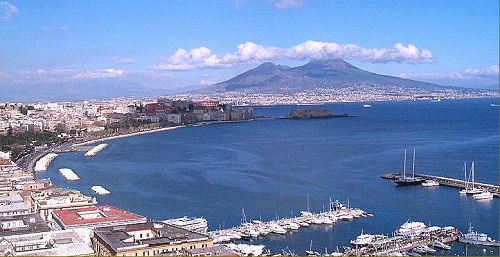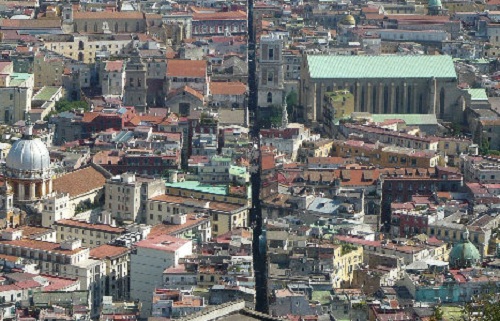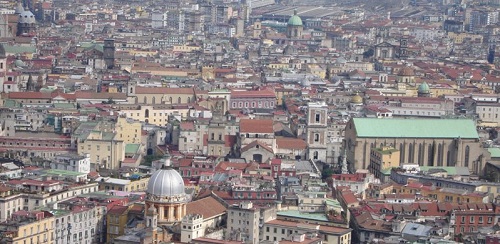
|
||||||||||||||||||||||||||||||||||||||||||||||||
|
||||||||||||||||||||||||||||||||||||||||||||||||
|
|
Naples Historical Centre
Naples is one of the most ancient cities in Europe, whose contemporary urban fabric preserves the elements of its long and eventful history. Its street pattern, its wealth of historic buildings from many periods, and its setting on the Bay of Naples give it an outstanding universal value without parallel, and one that has had a profound influence in many parts of Europe and beyond.
The period that followed the collapse of the Roman Empire in the West saw the beginning of church-building on a substantial scale, and churches such as those of San Gennaro extra moenia, San Giorgio Maggiore, and San Giovanni Maggiore have surviving elements of 4th- and 5th-century architecture. Extending over 720 hectares, the historic center of Naples is the largest historic center in all of Europe, and includes testimonies from diverse styles and periods – from its foundation in the 8th Century B.C. as the Greek colony Neapolis, to its subsequent domination by the Romans, and from the Swabian-Norman era to the Reign of the Anjous, and finally from its time under the Aragonese Empire, the Kings of France, to the period of Unification under Garibaldi and the resulting Kingdom of Italy. Visiting the historical centre of Naples is a real experience. A unique place for its wideness, conformation, number of monuments and population density. Spaccanapoli (Naples splitter) is the popular main artery that cuts through the historic city center, narrow and crowded with life. Historically, the street is one of the three decumani, or east-west streets, of the grid of the original Greco-Roman city of Neapolis.
In 1995 the Parthenopean historical centre has been proclaimed a UNESCO World Heritage Site. Visitors who walk around these streets are immediately catapulted in the history of the city.
A walk among churches, palaces and art places in which millenary cultures have followed each other, leaving an indelible mark.
Source : Assessorato al Turismo e ai beni culturali - Regione Campania - www For touring some of the churches and/or the catacombs please contact the social cooperative "La Paranza", E mail - prenotazioni@catacombedinapoli.it or visit the web site www The Holy Mile Tour is also being offered by the above named organization. The Holy Mile is an itinerary one-mile long, from the tomb of St. Gennaro to his Treasury. To walk along the Holy Mile means to cross the Sanità District, where once people in the south and east of Naples lived, from African to Chinese, where once one could met coaches with Popes, kings and cardinals, where today the churches are not only prodigious galleries but areas of rest, peace and design for a better life. - Naples Main Attractions - Basilica Carmine Maggiore | Basilica St Chiara | Basilica St Francesco di Paola | Basilica St Paolo Maggiore | Basilica St Maria della Sanita' | Chiesa del Gesu' Nuovo | Chiesa St. Domenico Maggiore | San Gennaro Cathedral | San Gregorio Armeno | St Angelo al Nilo | St Giovanni a Carbonara | St Lorenzo Maggiore | St Maria Anime al Purgatorio | St. Maria Donnaregina Vecchia | St Maria Donnaregina Nuova | St Pietro a Majella | Museum Cappella Sansevero | Naples Galleria | Vulcano Vesuvio | Naples Underground | The Catacombs | The Islands - Sorrento Coast - Amalfi coast - The Hamlets in Campania - Museums - Archaeology Sites - The region - The provinces >>> Napoli - Caserta - Salerno - Avellino - Benevento |

|
||||||||||||||||||||||||||||||||||||||||||||||
|
||||||||||||||||||||||||||||||||||||||||||||||||



